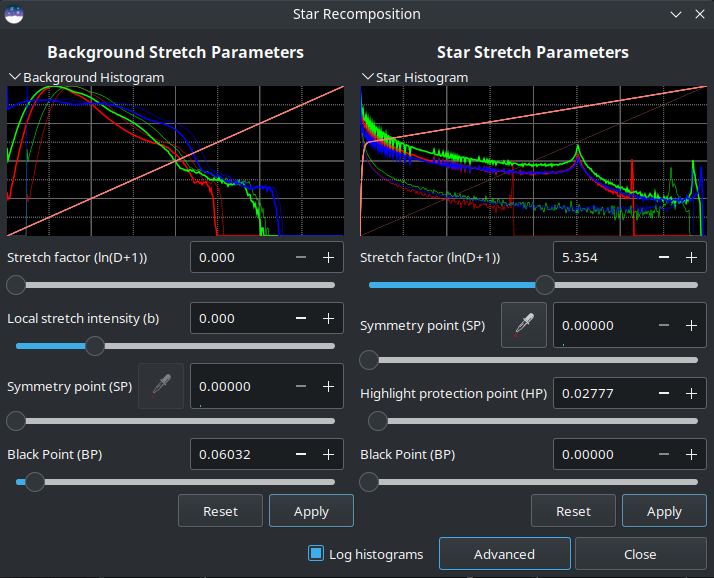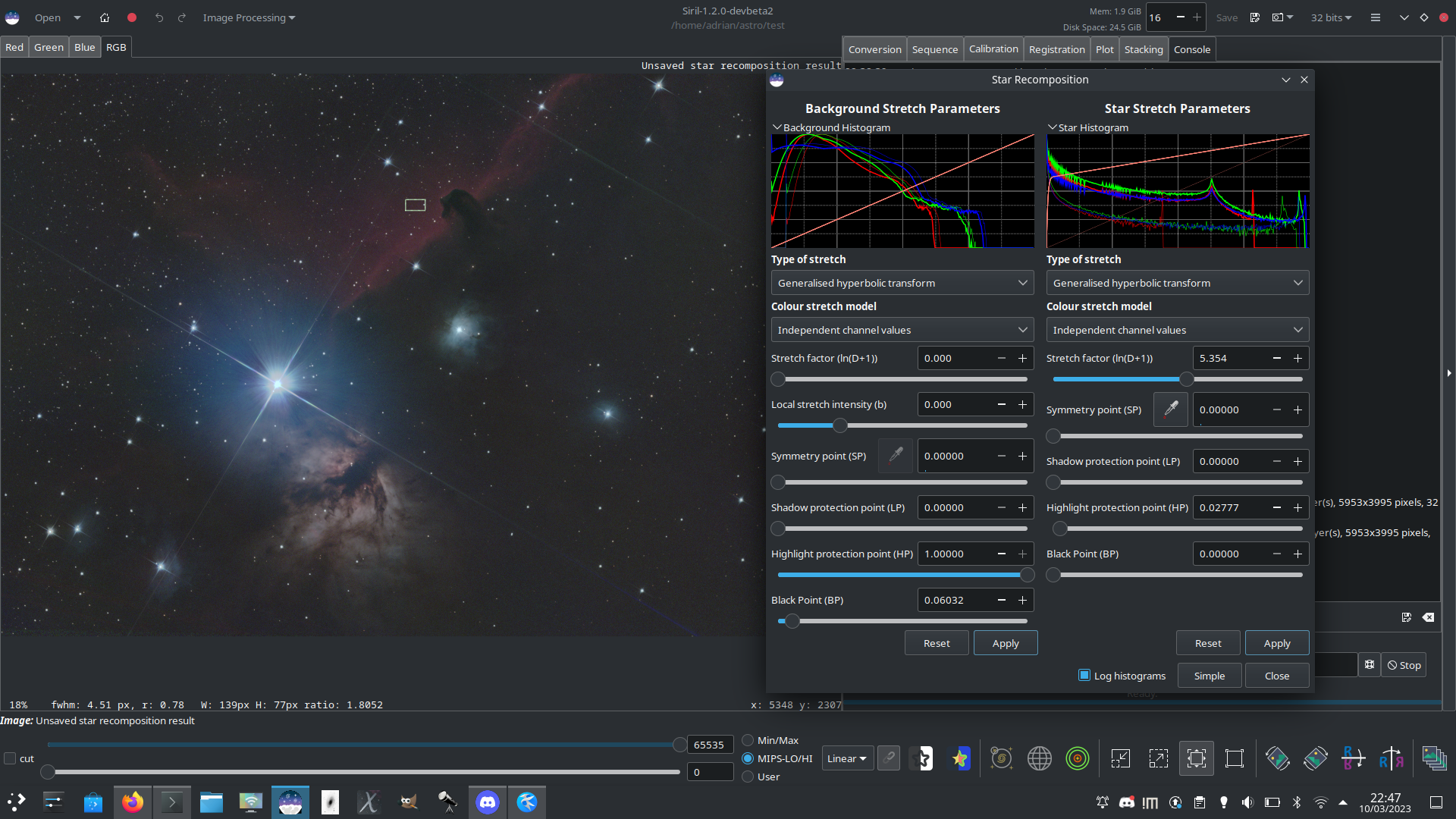Star Recomposition
Star Recomposition is a GUI tool to aid in combining starless and star mask images. It doesn't provide any unique image manipulation that can't be done in other ways, for example using PixelMath and the Generalized Hyperbolic Stretch tool, but it does provide a real-time preview of the combination of two separate images with different stretches applied to each.
There is no command-line equivalent for this tool as it is purely graphical in nature, however starless and star mask images could be combined using the PixelMath pm command and GHT-related commands (ght, invght, modasinh, invmodasinh and linstretch).
The tool is found in the Image Processing menu, in the Star Processing sub-menu.
The dialog is divided into two columns, one for each of the input images.

Star Recomposition dialog box.
Each input image is loaded using the respective file chooser. Each column has a stretch histogram preview, which may be minimized to aid use on small displays, a set of GHS stretch controls, and Reset and Apply buttons.
The histogram mode can be changed between linear and logarithmic using the toggle at the bottom of the dialog. This dialog obeys the Siril-wide preference for linear or logarithmic histograms that can be set in the Preferences window.
Simple Mode
The dialog has two views, which determines what controls are shown. It opens in Simple mode, which shows only the most useful controls for a typical starless / starmask combination.
The stretch type for the starless image is set to Generalized Hyperbolic stretch and the Stretch Factor, Local stretch intensity, Symmetry Point and Black Point controls are shown. As well as using the SP control, the Symmetry Point can be set using the eyedropper tool to select the average pixel value of a selection from the image.
Note that the eyedropper tool is disabled when there is an unapplied BP shift: because of the process of applying the hyperbolic stretch and then the BP shift, the behaviour of the tool becomes non-intuitive when a non-zero BP parameter is set. To resolve this, simply apply the BP shift and the eyedropper will become available again for your next hyperbolic stretch.
The stretch type for the star mask image is set to Modified Arcsinh stretch and the Stretch Factor and Highlight Protection controls are shown.
The human-weighted luminance color model is used for both sets of stretches: this does a better job of preserving colors in the unstretched image.
Details of all the stretch controls, both those shown in Simple mode as well as those shown in Advanced mode, can be found on the Generalized Hyperbolic Stretch documentation page.
The BP control works in a slightly different way to the BP control in the standalone GHS linear (black point adjust) stretch. In this tool the Black Point adjustment is applied after the hyperbolic stretch, whereas in the standalone tool it is a separate stretch applied by itself. When trying to optimize the combination of independent stretches to the two input images, this was found to be the most workable approach. It does mean that the amount of black point shift required in this tool is different to the amount required in the GHS tool, and that the Black Point cannot be set by clicking on the histogram.
Each stretch is independent. The stretch settings for the starless side can be applied using the left-hand Apply button: this stretches the starless image according to the current stretch settings and then resets the stretch settings so that further stretches can be applied in an iterative manner. Similarly, the stretch settings for the star mask can be applied using the right-hand Apply button. Either set of stretch settings can be reset to the defaults using its respective Reset button.
The dialog can be toggled between Simple and Advanced mode using the button at the bottom.
Advanced Mode
In Advanced mode the full range of GHS stretch controls are available including Stretch Type, Colour stretch model and Shadow protection point for both input images. This allows greater customization of the two stretches if required. If the user interface is put back to Simple mode, any changes made using the advanced controls remain in effect, only the controls are hidden.
Note
It is not possible to stretch the saturation channels in this tool. The tool is already quite memory-hungry and CPU intensive: doubling the memory requirement by adding a HSL copy of each working image is considered excessive. Saturation can easily be stretched separately after the combination is complete.

Using Star Recomposition combine a starless image and star mask of the Alnitak region